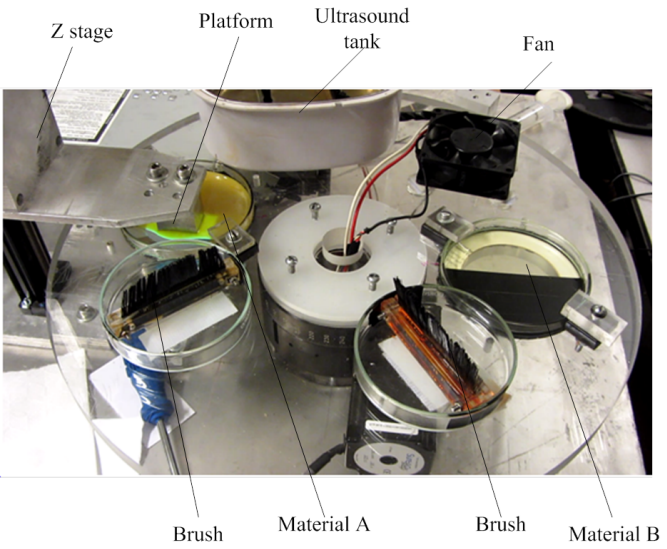3D-printing multi-material objects in minutes instead of hours
November 22, 2013
[+]
In another leap for 3D printing, researchers at the USC Viterbi School of Engineering have developed a faster 3D printing process that allows for 3D-printing multi-material objects in minutes instead of hours.
A
computer model of a pair of tweezers shows the distribution of
materials and degrees of hardness in the object to be 3-D printed in Dr.
Yong Chen’s lab at USC Viterbi (credit: USC Viterbi)
Fabrication time and the complexity of multi-material objects have been a hurdle to widespread use of 3D printing.
Speeding up printing
USC Viterbi researchers developed improved mask-image-projection-based stereolithography (MIP-SL) to drastically speed up the fabrication of homogeneous 3D objects. In the MIP-SL process, a 3D digital model of an object is sliced by a set of horizontal planes and each slice is converted into a two-dimensional mask image.
[+]
The mask image is then projected onto a photocurable liquid resin
surface and light is projected onto the resin to cure it in the shape of
the related layer.
Heterogeneous model. Left: the CAD model; right: the fabricated part. (Credit: Zhou C. et al./Rapid Prototyping Journal)
The USC Viterbi team also developed a two-way movement design for bottom-up projection so that the resin could be quickly spread into uniform thin layers. As a result, production time was cut from hours to a few minutes.
[+]
Multi-material objects
Rotary fabrication system for printing two materials per layer, including cleaning (credit: USC Viterbi)
In their latest paper, the team successfully applies this more efficient process to the fabrication of heterogeneous objects (which comprise different materials that cure at different rates).
This new 3D printing process will allow for dental and robotics models, for example, to be fabricated more cost- and time-efficiently than ever before.
“Multi-material printers are commercially available from Stratasys (Objet Connex). However, only limited materials (photocurable resins) can be used since liquid resins need to pass through small nozzles. Our approach may expand the selections of base materials that are used in multi-material printing,” Chen explained to KurzweilAI.
“Our system provides more design freedoms for product designers and may enable them to design components with better performance or multi-functions,” Daniel J. Epstein, Department of Industrial and Systems Engineering and the study’s lead researcher, added.
“It is still in the research phase. We will actively commercialize it through licensing to existing companies or creating a new company in the future.”
Chen his team next plan to investigate how to develop an automatic design approach for heterogeneous material distribution for user-specified physical properties and how to improve the fabrication speed.
The study was partially supported by the National Science Foundation.
(¯`*• Global Source and/or more resources at http://goo.gl/zvSV7 │ www.Future-Observatory.blogspot.com and on LinkeIn Group's "Becoming Aware of the Futures" at http://goo.gl/8qKBbK │ @SciCzar │ Point of Contact: www.linkedin.com/in/AndresAgostini
 Washington
Washington